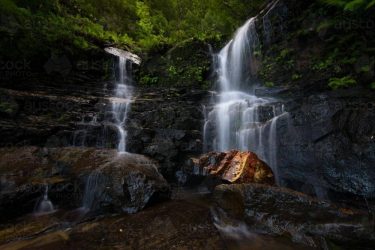The Drake Passage is a name that stirs the imagination of adventurers, explorers, and nature enthusiasts alike. This legendary body of water, spanning the turbulent expanse between the southern tip of South America and the icy wilderness of Antarctica, is one of the world’s most fascinating and formidable waterways.
The Gateway to Antarctica

Often referred to as the “Gateway to Antarctica,” the Drake Passage is the only natural sea route connecting the Atlantic and Pacific Oceans in the Southern Hemisphere. It stretches approximately 800 km (500 miles) wide, offering a thrilling journey for those brave enough to traverse its often tempestuous waters.
For many travelers, crossing the Drake Passage is a rite of passage, an adventure that combines breathtaking scenery with the anticipation of reaching the pristine landscapes of Antarctica.
A Test of Courage and Stamina

The passage is infamous for its unpredictable weather and powerful waves, making it a challenge even for seasoned sailors. Crossing the Drake Passage can mean encountering waves as high as 12 meters (40 feet) and winds that test the limits of even the sturdiest vessels. Travelers should prepare for what’s affectionately known as the “Drake Shake” — the often rough, rolling seas that define the crossing.
However, not every journey through the Drake is a stormy ordeal. Some lucky voyagers experience the “Drake Lake,” a rare calm that transforms the passage into a serene and almost meditative voyage.
Wildlife Spectacle
One of the most captivating aspects of the Drake Passage is its abundant marine life. Pods of playful dolphins, majestic humpback whales, and even orcas are common sights in these icy waters. Birdwatchers will be thrilled by the sight of albatrosses, petrels, and shearwaters gracefully soaring over the waves. The passage is a rich and vibrant ecosystem, offering unparalleled opportunities for wildlife observation.
Choose the Right Time to Travel

The ideal time to cross the Drake Passage depends on Antarctica’s tourism season, which typically runs from November to March. Each month offers unique experiences:
- November to Early December: Pristine landscapes and wildlife courtship displays.
- Mid-December to January: Warmer temperatures and peak wildlife activity, including penguin chicks hatching.
- February to March: Best time for whale watching and dramatic sunsets.
Book a Trusted Expedition Operator
Since the Drake Passage is part of an Antarctic expedition, you’ll need to book with a licensed operator. Look for companies with excellent safety records, experienced crew, and small passenger ships designed for polar conditions. Popular operators include Quark Expeditions, Hurtigruten, and National Geographic Expeditions.
Choose Your Vessel

The ship you choose greatly impacts your experience. Most Antarctic expedition ships are ice-strengthened and equipped with stabilizers to handle the Drake Passage’s challenging waters.
- Small Ships (50-150 passengers): More intimate and closer wildlife experiences.
- Large Ships (150+ passengers): Greater stability but limited access to some areas.
- Luxury Cruises: Offer added comfort with features like spas and fine dining.
Prepare for the Journey
Crossing the Drake Passage requires both physical and mental preparation:
- Pack Smart: Include warm, waterproof clothing, sturdy boots, gloves, and hats. Don’t forget motion sickness remedies, whether over-the-counter or prescribed.
- Travel Insurance: Ensure your policy covers medical evacuation and emergencies in remote regions.
- Mental Readiness: The crossing can take 2-3 days and may involve rough seas, so brace yourself for an adventure.
What to Expect During the Crossing

- Weather Conditions: The weather is highly unpredictable. You may encounter the “Drake Shake” (rough seas) or the “Drake Lake” (calm waters).
- Wildlife Encounters: Watch for seabirds like albatrosses and petrels, as well as occasional sightings of whales and dolphins.
- Ship Life: Expedition ships offer lectures, workshops, and plenty of opportunities to meet fellow travelers while crossing the passage.
Activities on Arrival in Antarctic
Once you’ve crossed the Drake Passage, the rewards are extraordinary:
- Zodiac Excursions: Get up close to icebergs, seals, and penguin colonies.
- Landings: Walk on the Antarctic continent and explore its unique environment.
- Wildlife Viewing: Observe penguins, seals, whales, and seabirds in their natural habitats.
- Polar Plunge: A daring dive into icy Antarctic waters for the adventurous!
Alternative Options to Avoid the Drake Passage
If you’re hesitant about the crossing, consider alternatives:
- Fly-Cruise Packages: Fly directly to Antarctica’s King George Island and skip the Drake Passage altogether.
- Sail from Australia or New Zealand: These routes are less common and involve longer sea crossings.
Respect the Environment

Antarctica is one of the most pristine places on Earth, and preserving its fragile ecosystem is vital. Follow guidelines set by the International Association of Antarctica Tour Operators (IAATO), such as:
- Avoiding contact with wildlife.
- Staying on designated paths during landings.
- Minimizing waste and plastic use.
Conclusion
Traveling the Drake Passage is a journey of a lifetime, offering unparalleled access to the wonders of Antarctica. By planning carefully and embracing the spirit of adventure, you’ll create memories that will stay with you forever. So, pack your bags, prepare your sea legs, and embark on a voyage to the ends of the Earth!
Frequently Ask Questions
Drake's Passage is rough because it lies between the Pacific and Atlantic Oceans, where strong currents, powerful winds, and the lack of land barriers create turbulent seas.
It is generally safe to go through the Drake Passage today, especially with modern ships and experienced crews. However, it can still be challenging due to rough seas, strong winds, and unpredictable weather. Travelers should be prepared for motion sickness and follow safety precautions.
A few people have swum parts of Drake Passage, but it is extremely rare and dangerous due to freezing water temperatures, strong currents, and rough seas. Such swims are usually done with significant safety measures in place, including support boats and thermal protection.
The mystery of the Drake Passage lies in its extreme and unpredictable nature. It is one of the roughest seas in the world, with massive waves, powerful currents, and sudden weather changes. Its remoteness and challenging conditions have led to many shipwrecks and tales of adventure, adding to its mystique. Additionally, its role as a major marine crossroads connecting the Atlantic and Pacific Oceans contributes to its scientific and historical intrigue.

Owen Samuel is a Destination Manager based in California, known for his expertise in creating unforgettable travel experiences. With a deep passion for tourism and local culture, he helps travelers discover the best places around the world.











